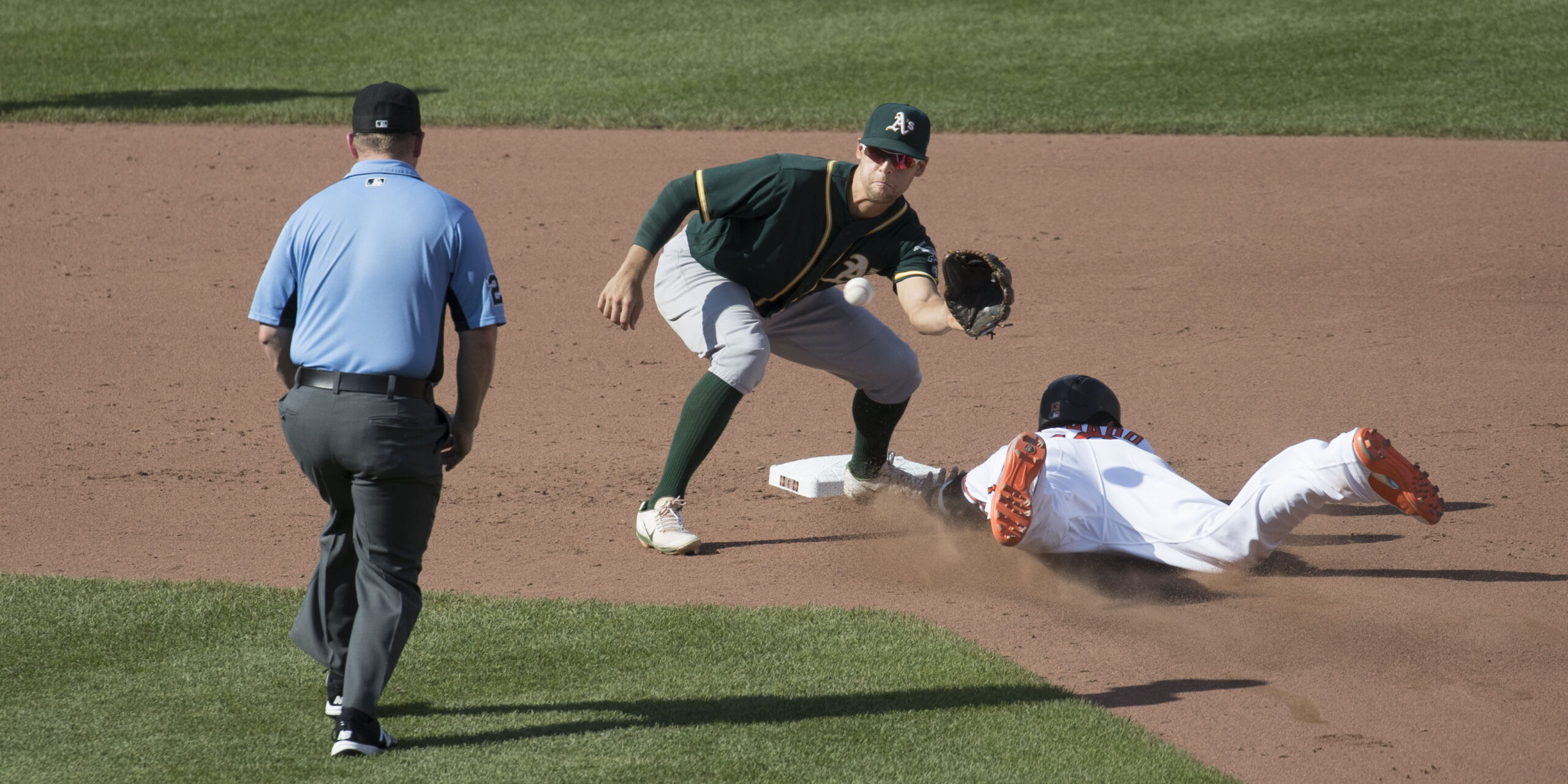
The Reds have signed veteran utility-man Chad Pinder to a minor-league contract, according to FanSided’s Robert Murray. The Enquirer’s Bobby Nightengale and MLB.com’s Mark Sheldon have confirmed the report.
As far as minor-league signings go, this one is at least intriguing because it’s a player who has significant MLB experience. The right-handed hitting Pinder is 30 years old and has spent his entire career to this point with the Athletics after being selected with the 71st overall pick in the 2013 draft. He was the longest-tenured A’s player on the 2022 team, which made him a fan favorite on a roster constantly dealing with turnover. Pinder has appeared at every position except catcher, but he’s spent most of his time in left field and right field.
Pinder is coming off his worst season, as he batted just .235/.263/.385 with an 86 wRC+ in 379 plate appearances. For his career, Pinder is a .242/.294/.417 hitter, putting him slightly below average (96 wRC+). That’s not a standout batting line by any means, but there are a couple of points worth noting.
First, the bad news: his plate discipline leaves a lot to be desired. Pinder has a career 27.3% strikeout rate against a 5.9% walk rate, both numbers that are quite a bit worse than league average. The 2022 season was a disaster in this regard; Pinder posted an abysmal 31.1% strikeout rate and 3.7% walk rate. Those weren’t just career-worsts, but they were among the worst marks in baseball. He ranked in the bottom 6% in whiff rate, bottom 5% in strikeout rate, and the bottom 2% in walk rate. His strikeout-to-walk ratio (0.12) was the worst among all hitters with at least 350 plate appearances. If that doesn’t improve in 2023, he’ll struggle to make the Reds’ roster, let alone stick on it.
The other thing that sticks out about Pinder’s career slash line is the slugging percentage. On its own (.417), it isn’t impressive. But note the gap between his batting average and slugging percentage, also called isolated power (ISO). This stat shows how many extra-base hits a player gets per at-bat and ignores singles. For Pinder, it shows some underlying ability to drive the ball. His career ISO is .175, which is above league average over that time (.166).
The above-average ISO is backed up by his batted-ball data. From 2016 to 2021, he was better than league average when it came to metrics such as average exit velocity, hard-hit rate, barrel rate, and xwOBACON. Then, 2022 happened:

Talk about falling off a cliff. Pinder’s barrel rate was also a career-low at 6.5%. His overall hard-hit rate (40.7%) remained above average (35.8%), however, showing some indication he can still make solid contact.
Pinder has never put up big home run numbers; he has 62 career round-trippers and his career high is 15 back in 2017. His home ballpark likely held back his power output. By Statcast park factors, Oakland Coliseum is the second-least homer-friendly park in the game. Great American Ball Park, by contrast, is the most homer-friendly stadium. To illustrate the difference, Pinder would have 38 more career home runs if he played every game in GABP.
Another point to note is that Pinder hits left-handed pitching. Here are his career splits:
| BA | OBP | SLG | wRC+ | |
| vs. LHP | .264 | .322 | .456 | 114 |
| vs. RHP | .225 | .272 | .388 | 81 |
Even in a bad 2022 season, Pinder had a 108 wRC+ against southpaws.
If Pinder can drive the ball like he did prior to 2022, a switch to Cincinnati could resurrect his career a la Brandon Drury in 2022. At the very least, he could be a useful hitter against lefties. Whether a career revival happens could hinge on his plate discipline. He’s not going to get on base a lot — that much is clear at this point in his career. But if he’s struggling to make contact and is among the league’s worst in strikeout and walk rates again, it’ll be tough for him to provide positive value at the plate.
Defensively, Pinder is versatile, but he isn’t excellent at any position. He’s been consistently below average throughout his career at second base, his most-played position behind left and right field. The metrics are headed in the wrong direction when it comes to his outfield play, too.
| Outs Above Average | Defensive Runs Saved | |||
| Year | LF | RF | LF | RF |
| 2017 | 0 | 0 | 0 | 1 |
| 2018 | 5 | 0 | 7 | 0 |
| 2019 | 1 | 3 | 7 | 6 |
| 2020 | – | 0 | – | 0 |
| 2021 | -3 | 1 | 0 | -1 |
| 2022 | -1 | 3 | -5 | 0 |
Pinder grades out better in right field, but playing time will be sparse with Wil Myers expected to man that position on most days. He’s firmly below average in left field at this point in his career with a negative OAA and DRS over the last two seasons and 602.2 innings.
Pinder will have no shortage of competition to make the Reds’ 26-man roster. Nick Solak, Alejo Lopez, and Matt Reynolds will also be looking to fill a utility role on the Cincinnati bench. All have more infield experience than Pinder, but less time in the outfield. As a fellow right-handed hitter, outfielder Stuart Fairchild will also provide competition for Pinder.
Still, Pinder is essentially what you want in a minor-league deal: there’s some upside and virtually no downside. If he doesn’t impress in spring training, the Reds can easily release him and move on. If he winds up being the next Drury, Pinder could become another trade chip in July.
Featured image by Keith Allison


